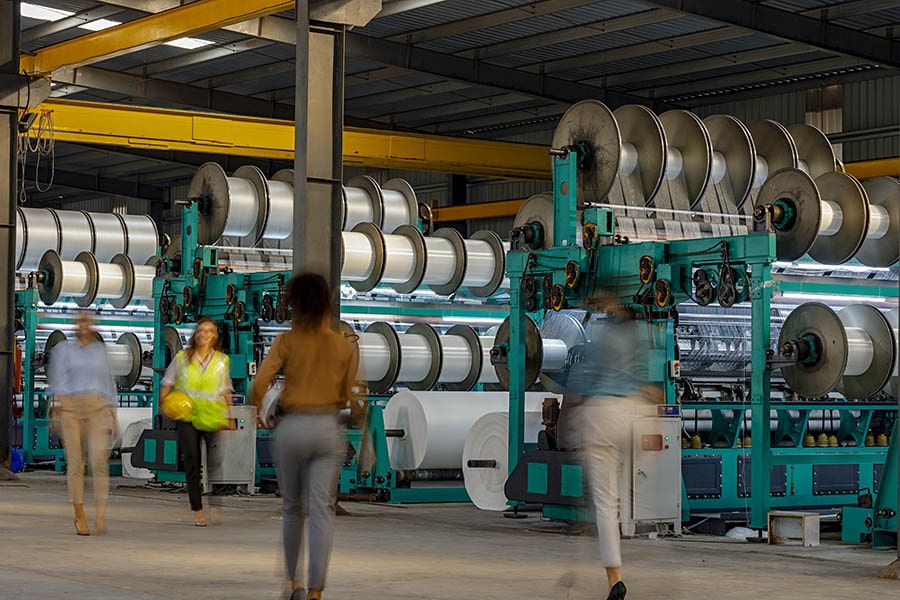Innovations in Textiles: Technological Advancements Shaping the Future of Bangladesh’s Garments Industry
The garments industry stands as a pivotal pillar of Bangladesh’s economy, driving employment and export revenues.
With a history rooted in traditional textile techniques, the country has rapidly transitioned towards modernization, becoming one of the world’s largest producers of textiles and garments.
The sector’s contribution to Bangladesh’s export earnings and employment cannot be overstated, making it imperative to explore the technological innovations propelling its growth.
Evolution of Textile Innovations in the Garments Industry
The textiles industry in Bangladesh has evolved considerably over time. From relying on age-old techniques to adopting modern machinery, the transformation has been remarkable.
Traditional methods like handloom weaving and natural dyeing once dominated, reflecting the country’s rich cultural heritage. Early technological advancements introduced mechanization, boosting efficiency and scale.
However, the true revolution came with modernization and automation, enabling a quantum leap in production capacity and quality.
Technological Advancements in Textiles
Sustainable Materials and Manufacturing
In recent years, the demand for sustainable textiles has surged globally. Bangladesh’s garments industry is actively embracing organic, recycled, and bio-based materials to reduce its environmental footprint. These materials not only minimize the use of harmful chemicals but also address social sustainability concerns by promoting fair trade practices. This shift is redefining the industry’s approach, fostering a more responsible and eco-conscious ethos.
Smart Textiles and Wearable Technology
The convergence of textiles and technology has given rise to smart textiles and wearable tech. Fabrics embedded with electronics offer a myriad of applications, from health monitoring to sports performance enhancement. In Bangladesh, this innovation has opened doors to new product lines and markets, catering to the tech-savvy consumers of today.
Digital Printing and Design
Digital printing has disrupted traditional textile design and production methods. It allows for intricate patterns, colors, and customization with reduced waste compared to conventional methods. Bangladesh’s garments industry has embraced this technology, fostering a culture of creativity and flexibility while minimizing environmental impact.
Advanced Weaving and Knitting Techniques
The art of weaving and knitting has undergone a renaissance with advanced 3D technologies. These techniques transcend flat fabrics, creating textured and functional materials. Such innovations are reshaping product aesthetics and utility, offering consumers a unique sensory experience.
Robotics and Automation in Garment Manufacturing

Automated Cutting and Sewing
Robotic systems are revolutionizing garment manufacturing, particularly in cutting and sewing. Precision and efficiency are heightened, leading to consistent product quality and reduced production time. Bangladesh’s industry is adopting these technologies, streamlining processes and elevating its competitive edge.
Supply Chain and Logistics Automation
Warehousing, inventory management, and order processing are being transformed through automation. AI-driven demand forecasting optimizes stock levels, while robotics streamline order fulfillment. These advancements are reshaping the industry’s supply chain, enhancing efficiency and customer satisfaction.
Role of Artificial Intelligence in Textile Innovation
Design and Pattern Generation
AI-assisted design software accelerates the creative process, enabling rapid prototyping and design iterations. This enhances designers’ capabilities and reduces time-to-market for new products, fostering innovation and competitiveness.
Quality Control and Inspection
AI-driven quality control systems detect defects in fabrics with unparalleled accuracy. This ensures consistent product quality, minimizes wastage, and maintains consumer trust in the brand’s offerings.
Predictive Maintenance in Manufacturing
AI’s predictive capabilities prevent machinery breakdowns by analyzing real-time data. This minimizes production downtime, optimizing efficiency and cost-effectiveness.
Challenges and Opportunities
As technology permeates the industry, upskilling the workforce becomes paramount. Training programs are essential to equip workers with the skills needed to operate and maintain advanced machinery, fostering human-machine collaboration.
Investment and Infrastructure
While the benefits of technological adoption are evident, the initial investment can be substantial. Building the necessary infrastructure and securing financial resources present challenges that need strategic solutions.
Ethical and Social Considerations
As automation increases, concerns about job displacement and ethical manufacturing practices arise. Ensuring that technology complements rather than replaces the workforce, while adhering to ethical labor practices, is a delicate balance that industry stakeholders must navigate.
Successful Implementation of Textile Innovations
Several companies have exemplified the successful integration of technological innovations. For instance, “Green Garments” has championed sustainable materials, while “TechTex Fashion” has embraced smart textiles. These case studies showcase tangible benefits in terms of increased productivity, reduced environmental impact, and enhanced product value.
Future Outlook and Trends
Continued Convergence of Technology and Textiles
The trajectory of Bangladesh’s garments industry suggests that the intertwining of technology and textiles will only deepen. This synergy will give rise to more sophisticated products and processes, keeping the industry competitive on the global stage.
Potential for Cross-Industry Collaborations
Textile innovations are not confined to fashion alone; collaborations with industries like healthcare and automotive offer exciting possibilities. This diversification could drive new revenue streams and enhance the industry’s resilience.
Embracing Circular Economy Principles in Textiles
The industry is moving towards circular economy principles, emphasizing recycling and sustainable practices. As consumers prioritize eco-friendly products, aligning with circularity will be crucial for long-term success.
Further Reading: Women’s Involvement in the Garment Industry
Conclusion
The evolution of Bangladesh’s garments industry through technological innovations is reshaping its future. The transition from traditional methods to cutting-edge technology reflects the industry’s adaptability and ambition.
By embracing sustainability, automation, and AI-driven solutions, the industry can position itself as a global leader, fostering economic growth while addressing environmental and social challenges.
This transformative journey requires collective effort from manufacturers, policymakers, and consumers, ensuring that innovation drives prosperity with responsibility.

